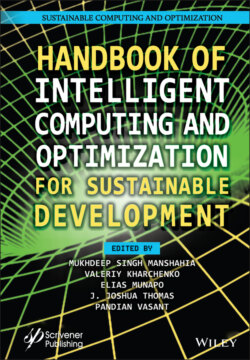Читать книгу Handbook of Intelligent Computing and Optimization for Sustainable Development - Группа авторов - Страница 119
5.2.1 Automatic Modulation Classification
ОглавлениеAMC is the process of classifying the modulation scheme of a signal and is a core technique of non-cooperative communication. It is an intermediary step between signal reception and signal demodulation. It is essential for rapid response and signal identification in dense electromagnetic spectrums in the presence of channel noises and multipath effects in military, cognitive radio, and 5G network applications. The two key steps in the design of a modulation classifier are signal pre-processing and selection of an effective classification algorithm. The pre-processing section might include (but are not limited to) reduction of signal noise, estimation of carrier frequency and signal power and extraction of essential signal information (as per the requirements of the classification algorithm) [27]. As for the second part, modulation classification algorithms can be either likelihood based, or feature based. Likelihood-based classifiers essentially work by comparing the likelihood ratio of the received signal against a predetermined threshold and have the advantage of minimizing the probability of a false classification but are more complex, require higher computational power, and are more difficult to implement in hardware. Feature-based classification has two main subsystems 1: feature extraction (which can be considered a pre-processing step) [28] and 2: classification [29, 30]. This method makes use of certain specific features of the received signal and classifies based on these feature values. Although they have less than optimal performance, feature-based classifiers greatly reduce computational complexity and can be acceptable with proper design.
A wide amount of work has been done in feature-based AMC and the application of DL algorithms directly on the received signal, thereby eliminating the feature extraction step and further reducing computational complexity. The application of CNN in AMC has shown promising accuracy which can ensure acceptable performance with much lower cost of computation. The next step would be to find effective hardware implementation of DL-based AMC classifiers [31].
